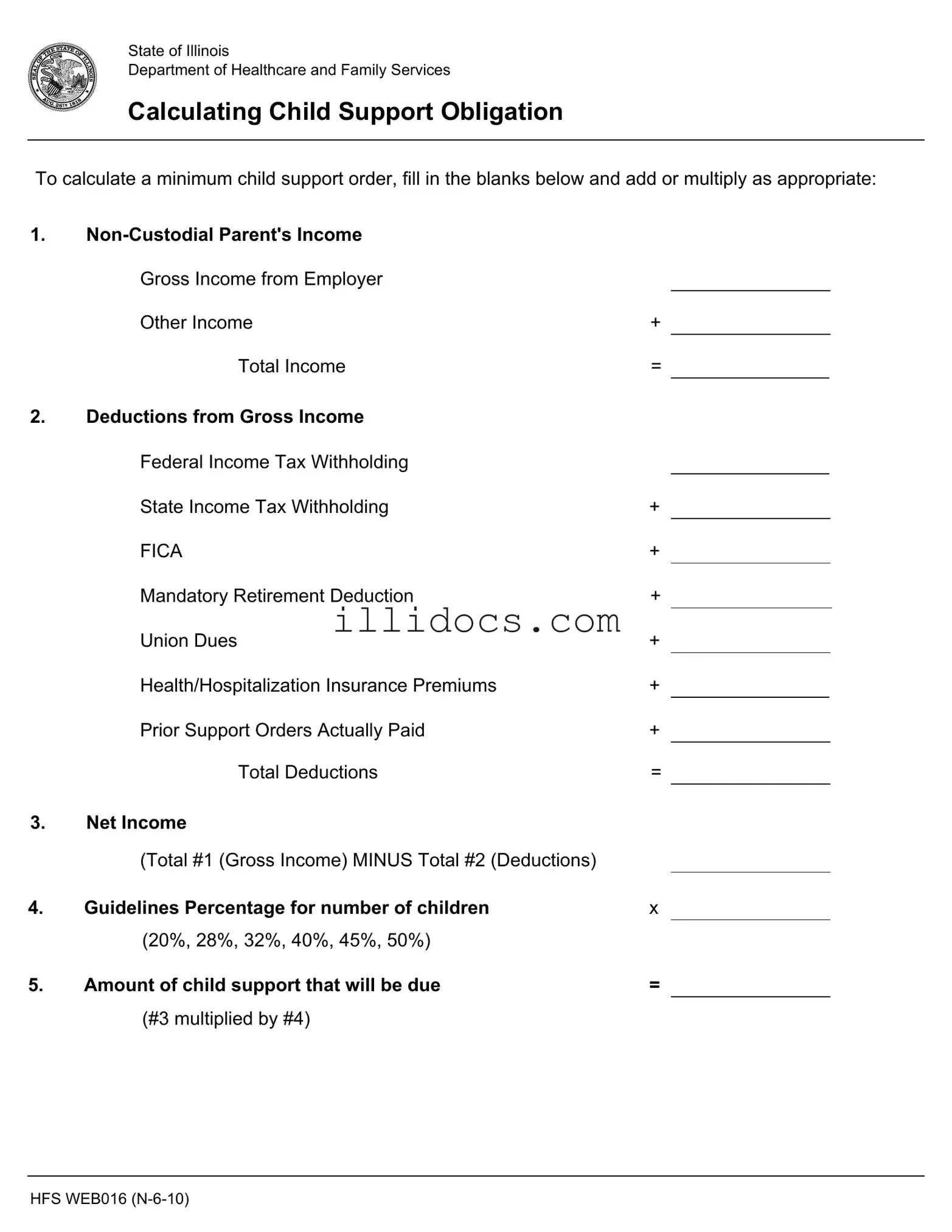What is the purpose of the Illinois Calculating Support form?
The Illinois Calculating Support form is designed to help determine the minimum child support obligation for non-custodial parents. By filling out this form, parents can calculate the amount of support they are required to pay based on their income and certain deductions. This ensures that the child’s needs are met while also considering the financial capabilities of the non-custodial parent.
How do I calculate my net income using the form?
To calculate your net income, start by determining your gross income. This includes your earnings from your employer and any other sources of income. Next, you will list your deductions, which may include federal and state income tax withholdings, FICA, mandatory retirement deductions, union dues, health insurance premiums, and any prior support orders you are currently paying. After you have totaled your gross income and your deductions, subtract the total deductions from the gross income. The result is your net income, which will be used in the child support calculation.
What are the guidelines percentages for calculating child support?
The guidelines percentages for child support in Illinois vary based on the number of children involved. For one child, the percentage is 20% of the non-custodial parent’s net income. This percentage increases with additional children: 28% for two children, 32% for three children, 40% for four children, 45% for five children, and 50% for six or more children. These percentages are applied to the calculated net income to determine the total amount of child support due.
What if my financial situation changes after I submit the form?
If your financial situation changes after you have submitted the Illinois Calculating Support form, it is important to update your child support obligations. Changes in income, employment status, or other financial circumstances can impact the amount of support you are required to pay. You may need to file a petition with the court to modify your child support order, ensuring that it accurately reflects your current situation and the needs of your child.
